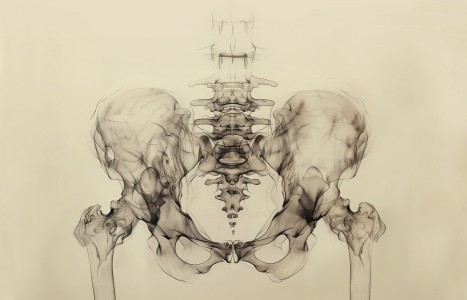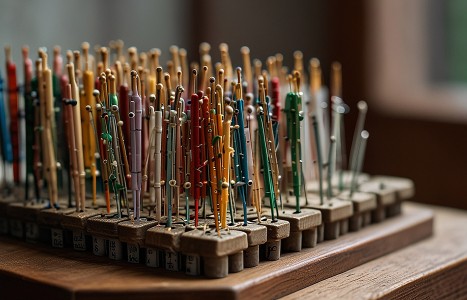People today want convenience, whether it be from their bank, credit card, favorite retail store, or restaurant. They demand it from the companies who hold their loyalty, including their health care providers (you). They don’t want to call and possibly be put on hold, and they want to use an app or schedule an appointment on your website. Here are three reasons your practice can gain by switching to online appointment scheduling.
The Eleventh Question: "How you doin'?"
During the Oriental Medical evaluation 10 questions are typically asked. Although the questions vary somewhat, they typically refer to diet, elimination, emotions, temperature sensations and preferences. The purpose is to better understand the patient's qi dynamic through a series of correlations.
Asking detailed but flexible questions based on the patient's degree of self and qi awareness can further enhance treatment. These questions are asked before and during treatment and may be generically (and colloquially) summarized by asking "how you doin'?"
Determining the patient's initial qi-awareness is simple. If the patient is able to form a "qi ball" they will likely experience non-physical sensations of treatment. One forms a "qi-ball" by holding their hands about six inches apart and gently and slowly moving them towards and away one may feel sensations as "magnetic," tingling or temperature change.
How to ask the questions
Begin by asking simple open ended questions followed by opposing alternatives. For example, a patient who complains of pain is asked the exact location of their pain followed by questions regarding the quality and intensity. One type of question is if the affected region feels "heavy or weak."
The questions should become progressively detailed. After the exact location has been found the patient is asked if there are variations in the quality, intensity and heaviness/weakness of the pain of the affected and surrounding region. These finer detailed questions help determine the layer- cutaneous region to bone-and if the imbalance is a combination of excess and deficiency conditions.
Questioning continues during the administration of treatment. If the pain is active while the treatment is being administered then ask the patient exactly how the pain is changing in terms of location, quality and intensity. Sometimes part of the pain will immediately reduce. An acupuncture point may reduce a portion of the affected region or one component such as pain, but not heaviness.
If the main complaint is not observable or active at the time of treatment then questioning is directed towards the subtle sensations. These include tingling, heavy or light, increasing calmness to changes of thoughts and emotional experiences.
Gentle encouragement is important when inquiring about detailed and subtle experiences. Patients are sometimes uncomfortable describing details as this since they are foreign. However, as they become more aware of their own bodies and minds they become more comfortable articulating their sensations. However, the practitioner should question only to the degree the patient is comfortable at the time. It is equally important to prevent the patient feeling inadequate or frustrated because they don't "feel it."
Here are some sensations and their meanings:
- "Tingling, flowing" sensation- Qi flow along the meridian. The sensation may remain along the surface, move from the surface to the interior or occur only at the interior of the body.
- Alternating "heavy" and "light" sensation- the qi is flowing and has reached a blockage, is attempting to unblock it and then finally passes the blockage temporarily. Sometimes additional needling may help or moving (typically extending) the nearby or affected limb.
- Heat or cold- sometimes palpable- the release of Heat or Cold. The release could occur within the body or the release could occur from the body.
- "Heavy, good"- fuller/stronger sensation of a body part or region. This indicates tonification. The addition of qi to the body or region.
- "Heavy, bad"-uncomfortable with possible difficulty moving. This indicates increasing (of qi) stagnation of a part or region. Dispersing or draining technique is indicated.
- "Lighter, good"-relaxed- body part or region. This indicates that draining/release of excess (qi) from the body or redistribution.
- "Light bad"- weakness. This indicates draining (of qi). Either loss of from the body, or redistribution (of qi) so there is a general deficiency. Tonification techniques are indicated.
- "Uneven"- qi is not completely balanced. Uneven feelings may be due to any combination of true and/or relative excesses or deficiencies between areas. For example one may feel one leg "heavy uncomfortable" (excess) and the other "light weak" (deficiency). This suggests the treatment is still occurring or a blockage remains. Longer treatment time or stronger moving techniques are indicated. This also may be due to "layering" of imbalances such as deep low back fatigue (Kidney Yin/Yang deficiency) with superficial "sharp stabbing" pain (qi and Blood stagnation of the muscles.) "Layered" treatment plan –Tonify Kidney Yin/Yang and Move Qi and Blood may be indicated in such a case.
- "Dizziness heavy"- excess (qi) of the head. One may either "release" the excess from the top of the head or "bring down" towards the feet.
- "Dizziness light"- deficient (qi) of the head.
- Seeing colors- often associated with the chakras. Typically dark muddy colors suggest disharmonies but become more clear and brilliant as the affected chakra balances.
Patient Experiences Related to Treatment
Initial needle insertion depth may cause different qi flow sensations and adjustment of the needle may change sensations. Patients may describe the affects of acupuncture point combinations. The "Four Gates" (Liv 3 Tai Chong and LI 4 He Gu) cause a centrifugal, counterclockwise motion about the center of their body. Their body tends to feel more "even" after treatment.
Patients may enhance acupuncture needling by describing sensation and/or symptom reduction upon acupuncture point palpation prior to insertion. Initial needle insertion depth may affect symptoms differently. A patient with low back pain and Temporal Mandibular Joint (TMJ) pain noted shallow needle insertion of SJ 5 (Wai Guan) decreased her TMJ pain but deeper insertion decreased her low back pain. Another may feel tingling along the channel at a superficial level but an organ sensation at a deeper level.
Moving Forward
Developing correlations between the patient experience and Traditional Chinese medicine terminology further develops the practitioner and profession.
A patient presents with knee pain aggravated by cold weather. The practitioner interprets the symptoms into a pattern as Cold Qi trapped and stagnating in the knee joint. The treatment plan is to "expelling" or "releasing" Cold Qi from the joint. Local acupuncture points are chosen. As the needles are retained the patient may describe the sensation of cold emanating from the interior of the knee joint towards the skin. Needles are retained until the cold sensation ceases. The patient's experience confirmed the diagnosis and treatment plan. The patient also gained an empirical understanding of the Oriental Medical theory behind the treatment. Now, the patient can explain the treatment to others and generate referrals.
The 11th question is a simple, logical extension of the ancient methods questioning. It is a "low-tech" method to gather information regarding changes of the patient's qi dynamic during treatment that is as easy as asking "how you doin?"
References:
- Howard Lawrence. My Patient, My Teacher and Using the Four Gates". Qi The Journal of Traditional Eastern Health and Fitness.(Spring 2010): 4-5.
- Howard Lawrence. "Getting to the Point… and the Meridian Too". Acupuncture Today. (December 2005 Vol06, Issue 12).
- Howard Lawrence. "Diagnosis by Touching the Qi". Acupuncture Today (November 2007, Vol 08, Issue11).



